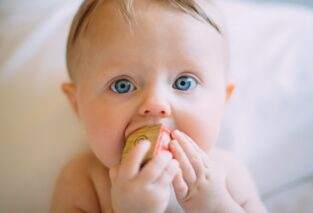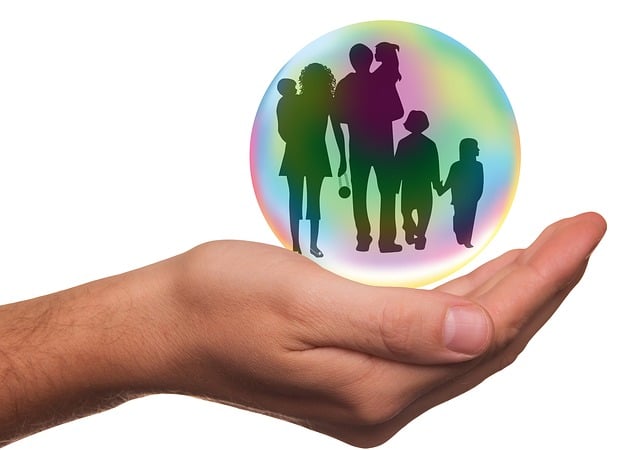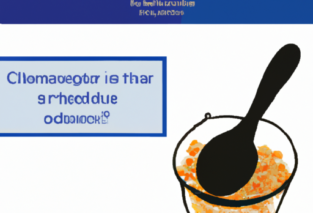In this article, we will explore the concept of green parenting and how it can help you raise an eco-friendly baby. We will discuss simple and practical tips on how to make sustainable choices for your little one, from choosing organic diapers to opting for natural and non-toxic baby products. Additionally, we will highlight the benefits of green parenting for both your baby’s health and the environment. By the end of this article, you will have a better understanding of how to incorporate eco-friendly practices into your parenting journey.

Benefits of Green Parenting
Green parenting refers to a parenting approach that focuses on raising children in an environmentally conscious and sustainable manner. By making conscious choices about the products we use, the behaviors we adopt, and the values we instill in our children, green parents aim to minimize their family’s impact on the environment. Not only does green parenting benefit the planet, but it also promotes a healthier, safer, and more cost-effective lifestyle for both parents and children.
Reduced Environmental Impact
One of the primary advantages of green parenting is the reduced environmental impact it has on the planet. By opting for eco-friendly products and practices, you can significantly reduce your carbon footprint and conserve natural resources. For instance, choosing to use cloth diapers instead of disposable ones helps minimize the tons of waste that end up in landfills each year. Similarly, using reusable snack and food containers instead of single-use plastic ones helps reduce plastic waste.
By adopting green transportation methods, such as using public transport or walking and biking with your baby, you can further decrease your family’s carbon emissions and decrease air pollution. These small changes in transportation habits contribute to the collective effort of creating a sustainable future for generations to come.
Healthier and Safer for Baby
Green parenting also prioritizes the health and safety of your baby. By choosing eco-friendly products, such as organic clothing and bedding, you can reduce your baby’s exposure to harmful chemicals and toxins often found in conventional products. Organic clothing is made from natural materials that are free from pesticides and other harmful chemicals, ensuring that your baby’s delicate skin remains healthy and irritation-free.
Similarly, using chemical-free baby care products protects your baby from harmful ingredients commonly found in mainstream products. These chemicals can irritate the skin, cause allergies, and potentially disrupt the hormonal balance in your baby’s body. Opting for natural alternatives, such as homemade baby care products or those made with organic and plant-based ingredients, can help keep your baby safe and healthy.
Saves Money
Contrary to popular belief, green parenting can actually save you money in the long run. While some eco-friendly products may have a slightly higher upfront cost, they are designed to be more durable and long-lasting, allowing you to save money over time. For example, investing in sustainable furniture for your baby’s nursery may initially cost more, but it will withstand the test of time and grow with your child, avoiding the need for constant replacements.
Similarly, cloth diapering can save you thousands of dollars compared to using disposable diapers. While the initial investment in cloth diapers may seem higher, the long-term savings are significant, especially if you plan to have more than one child. Additionally, cloth diapers are known to cause fewer instances of diaper rash, reducing the need for expensive diaper creams or medical treatments.
Choosing Eco-Friendly Products
When it comes to green parenting, choosing eco-friendly products is key to reducing your family’s environmental impact and creating a healthier living environment for your baby. Here are some categories of eco-friendly products worth considering:
Organic Clothing and Bedding
When selecting clothing and bedding for your baby, opt for organic materials that are free from harmful substances such as pesticides, insecticides, and synthetic dyes. Organic cotton, bamboo, and hemp are excellent choices as they are sustainably sourced and have a minimal impact on the environment.
Organic clothing not only protects your baby’s delicate skin from potential irritants but also supports ethical and sustainable farming practices. Look for certifications such as the Global Organic Textile Standard (GOTS) to ensure the authenticity of the organic products you choose.
Chemical-Free Baby Care Products
Traditional baby care products often contain chemicals, fragrances, and additives that can be harmful to your baby’s health. Look for natural alternatives made with organic and plant-based ingredients. These products are free from parabens, sulfates, phthalates, and artificial fragrances, making them safer for your baby’s sensitive skin and overall health.
Eco-Friendly Toys
Choose toys made from sustainable materials such as wood, bamboo, natural rubber, or recycled plastics. Traditional plastic toys often contain harmful chemicals, and their production contributes to pollution and the depletion of finite resources. Opting for eco-friendly toys supports sustainable manufacturing processes and reduces your baby’s exposure to toxins.
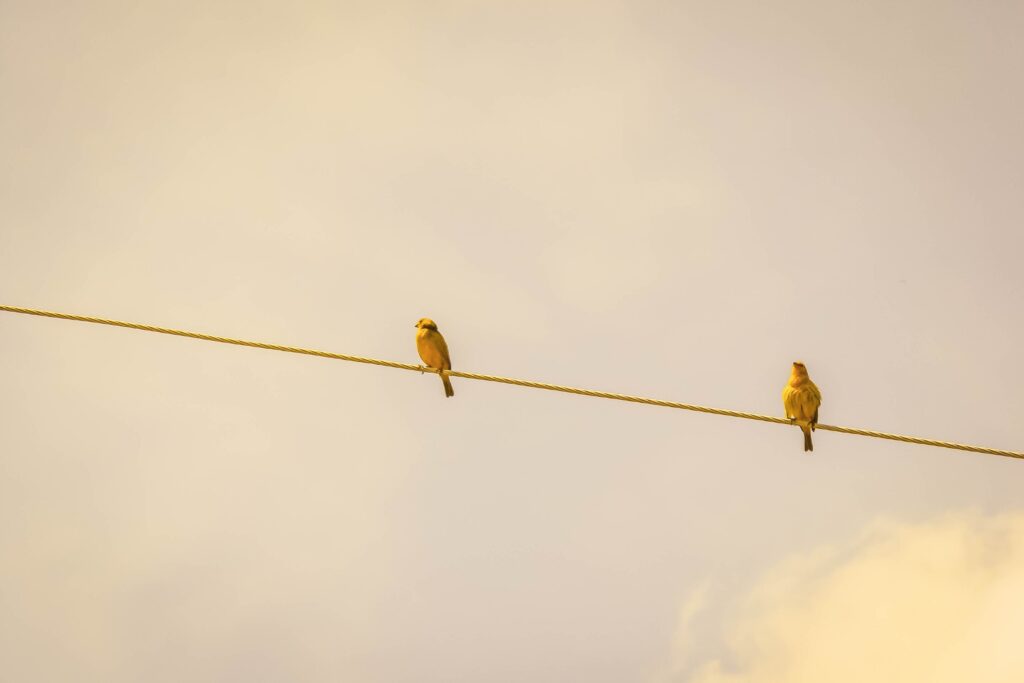
Creating a Sustainable Nursery
Creating a sustainable nursery is one of the key aspects of green parenting. From the paint on the walls to the furniture, every element should align with eco-friendly principles. Here are some tips to create a sustainable and safe nursery space for your baby:
Using Non-Toxic Paint
When painting the nursery, choose non-toxic and low-VOC (volatile organic compounds) paint. Conventional paint contains chemical additives that release harmful gases into the air, known as off-gassing. Opting for non-toxic paint ensures that your baby’s nursery remains a safe and healthy space, free from potentially harmful air pollutants.
Choosing Sustainable Furniture
Invest in sustainable furniture made from responsibly sourced materials such as reclaimed wood or bamboo. Look for furniture that is free from formaldehyde and other toxic chemicals commonly found in composite wood products. Choosing furniture that can grow with your child, such as convertible cribs and adjustable shelving units, reduces the need for frequent replacements and waste generation.
Energy-Efficient Lighting
Opt for energy-efficient lighting options in the nursery to reduce your energy consumption. Choose LED bulbs over traditional incandescent or compact fluorescent bulbs as they are more energy-efficient and have a longer lifespan. Additionally, consider using natural light by positioning furniture to maximize natural light exposure during the day.
Cloth Diapering
Cloth diapering is a popular choice among green parents due to its numerous benefits for both the environment and the baby. Here are some compelling reasons to consider cloth diapers:
Benefits of Cloth Diapers
-
Reduced waste: Disposable diapers take hundreds of years to decompose in landfills, contributing to the global waste crisis. Cloth diapers can be used multiple times and, with proper care, can be reused for subsequent children or even passed on to other families, significantly reducing waste.
-
Cost savings: While the initial investment in cloth diapers may be higher, using cloth diapers can save parents thousands of dollars compared to disposable diapers. The ongoing costs of purchasing disposable diapers can quickly add up, making cloth diapering a cost-effective long-term solution.
-
Reduced incidence of diaper rash: Cloth diapers are typically made from breathable materials that help prevent diaper rash. Unlike disposable diapers, cloth diapers do not contain chemicals, fragrance, or artificial dyes that can irritate the baby’s sensitive skin.
Different Types of Cloth Diapers
There is a wide variety of cloth diapering options available, allowing parents to choose the type that best suits their child’s needs and their lifestyle. Here are some of the most common types:
-
All-in-One (AIO) diapers: These diapers are the simplest to use and resemble disposable diapers in terms of convenience. They consist of a waterproof cover and an absorbent insert, all sewn together as one piece.
-
Pocket diapers: In this design, the diaper consists of a waterproof outer shell with a pocket that allows for the insertion of an absorbent insert. The inserts can be customized to increase or decrease absorbency as needed.
-
Prefold diapers: Prefolds are rectangular-shaped diapers that require folding and securing with diaper fasteners or pins. They are then covered with a waterproof cover. Prefolds are known for their versatility and affordability.
-
Fitted diapers: Fitted diapers are contoured to fit snugly around the baby’s body and do not require folding. They have elasticized leg openings and typically require a separate waterproof cover.
-
Flat diapers: Flat diapers are the most traditional and versatile option. They are large, rectangular pieces of fabric that can be folded and fastened in various ways to create a custom fit for the baby.
Washing and Care Tips
Proper washing and care are essential to maintain the longevity and effectiveness of cloth diapers. Here are some tips to keep in mind when washing cloth diapers:
-
Pre-rinse: Rinse soiled diapers with cold water to remove any solid waste.
-
Use a suitable detergent: Choose a detergent that is suitable for cloth diapers and free from additives such as fabric softeners, fragrances, and dyes. Avoid using bleach or harsh chemicals as they can damage the fabric.
-
Wash in hot water: Wash cloth diapers in hot water to kill bacteria and thoroughly clean the diapers. Follow the manufacturer’s guidelines for water temperature, as different fabric materials have specific washing requirements.
-
Drying: Line drying cloth diapers is the most eco-friendly option. However, if using a dryer, choose a low heat setting to preserve the elasticity and integrity of the diapers.

Breastfeeding and Green Parenting
Breastfeeding offers multiple benefits for both the baby and the environment, making it an eco-friendly choice for green parents. Here are some reasons why breastfeeding aligns with green parenting principles:
Benefits of Breastfeeding for the Environment
-
Reduced waste: Breastfeeding eliminates the need for formula containers and packaging waste. Formula production also creates a significant carbon footprint due to the manufacturing processes involved and the transportation of the product.
-
Conservation of resources: The production of formula requires the use of water, energy, and natural resources. Breast milk is a renewable and sustainable resource that does not deplete these valuable commodities.
-
Reduced emissions: The production and processing of formula involve the burning of fossil fuels, contributing to greenhouse gas emissions. Breastfeeding helps minimize these emissions as it does not require transportation or energy-intensive processes.
Green Breastfeeding Practices
To make your breastfeeding journey even more eco-friendly, consider adopting these green breastfeeding practices:
-
Use reusable nursing pads: Instead of disposable nursing pads, opt for reusable ones made from organic cotton or bamboo fabric. They are not only more eco-friendly but also more comfortable and cost-effective in the long run.
-
Avoid unnecessary breastfeeding accessories: While some breastfeeding accessories can be helpful, minimizing their use reduces waste. Consider which accessories are truly essential for your breastfeeding journey and try to find alternatives that are eco-friendly and reusable.
-
Breastfeed on demand: By breastfeeding on demand rather than implementing a strict feeding schedule, you can help establish a sustainable milk supply that meets your baby’s needs while reducing any potential waste from discarded milk.
Eco-Friendly Breastfeeding Accessories
If you do choose to use breastfeeding accessories, there are eco-friendly alternatives available. Look for products made from sustainable materials such as glass or stainless steel. These materials are durable, reusable, and have a lower environmental impact compared to their plastic counterparts. Additionally, investing in a breast pump that is energy-efficient and BPA-free can further align your breastfeeding journey with green parenting principles.
Baby-Led Weaning and Sustainable Eating
Baby-led weaning is an approach to introducing solid foods to your baby that emphasizes self-feeding and exploration. This method not only promotes healthy eating habits but also aligns with sustainable food practices. Here’s how baby-led weaning can contribute to green parenting:
Introduction to Baby-Led Weaning
Baby-led weaning encourages babies to feed themselves from the very beginning, skipping purees and moving straight to soft, age-appropriate solid foods. By allowing your baby to explore and self-feed, you promote independence, fine motor skills, and a positive relationship with food.
Unlike traditional weaning methods that involve purchasing and preparing jarred baby food, baby-led weaning reduces waste and packaging. By offering whole foods that the family is already eating and incorporating locally sourced, seasonal produce, you can further minimize the carbon footprint associated with your baby’s meals.
Choosing Organic and Local Foods
When practicing baby-led weaning, prioritize choosing organic and locally sourced foods whenever possible. Organic foods are grown without the use of synthetic pesticides, herbicides, and fertilizers, making them healthier for your baby and the environment. Supporting local farmers and purchasing local produce reduces transportation emissions and promotes sustainable agriculture practices.
By opting for organic and local foods, you also minimize your baby’s exposure to harmful chemicals commonly present in conventional produce. Organic farming practices prioritize soil health, biodiversity, and water conservation, making organic foods a safe and sustainable choice for your baby’s diet.
Reducing Food Waste
Baby-led weaning can also contribute to reducing food waste in your household. By allowing your baby to self-feed, they can choose the foods they are interested in and eat at their own pace. This reduces the likelihood of wasted food as they only eat what they are hungry for.
To further minimize food waste, plan your meals, and purchase only the necessary ingredients. Use leftovers creatively and freeze excess food portions for future meals. Embracing sustainable eating practices not only benefits the environment but also teaches your child the importance of reducing waste and making mindful food choices.
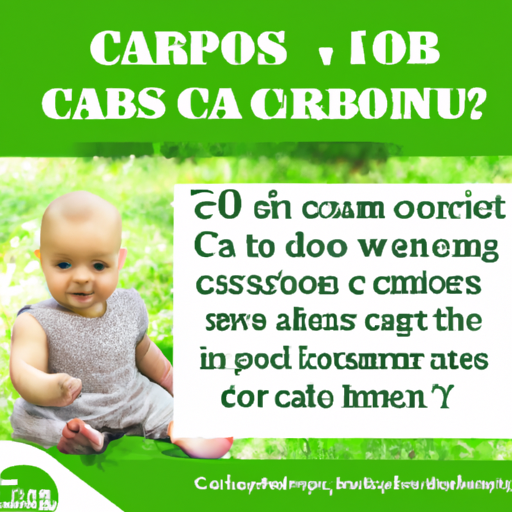
Natural and Homemade Baby Care
In addition to choosing eco-friendly products, adopting natural and homemade baby care practices further enhances your green parenting journey. Here are some ways to incorporate natural and homemade baby care into your routine:
Making Your Own Baby Care Products
Making your own baby care products allows you to control the ingredients used, ensuring they are free from harmful chemicals and additives. Simple ingredients such as coconut oil, shea butter, or oatmeal can be used to create homemade lotions, balms, and diaper creams. These natural alternatives are safe, effective, and inexpensive.
There are numerous resources available online that provide recipes and step-by-step instructions for making your own baby care products. By making these products yourself, you can reduce unnecessary packaging waste and frequent purchases of commercial products.
Using Natural Remedies for Common Ailments
For common ailments such as diaper rash, cold, or teething discomfort, natural remedies can often provide relief without resorting to over-the-counter medications. For example, using chamomile tea as a natural bath additive can soothe irritated skin, while a cold washcloth can provide relief for teething discomfort. Natural remedies reduce your baby’s exposure to unnecessary chemicals and minimize waste from packaging.
However, it is important to consult with a healthcare professional before using any natural remedies, as individual circumstances may require specific medical intervention.
Reducing Plastic Waste
Another aspect of green parenting is reducing plastic waste, and this extends to the baby care products we use. Opt for reusable alternatives to single-use plastic items such as plastic bottles, pacifiers, and teethers. Choose glass or stainless-steel bottles, natural rubber pacifiers, and silicone or wooden teethers as more sustainable options. These alternatives are durable, non-toxic, and can be used for an extended period, reducing the need for frequent replacements.
Reducing Waste and Recycling
Green parenting involves minimizing waste generation and promoting recycling practices. Here are some tips to help you reduce waste and recycle effectively:
Using Reusable Snack and Food Containers
Packing snacks and meals for your baby in reusable containers helps reduce plastic waste. Opt for stainless-steel, glass, or silicone containers instead of single-use plastic bags or disposable packaging. These containers are more durable, non-toxic, and can be used repeatedly, creating less waste in the long run.
Composting Baby Food Scraps
Composting is an excellent way to reduce waste in your household, including baby food scraps. Instead of throwing away leftover fruits and vegetables, consider composting them. A small compost bin or even a backyard compost pile can turn baby food scraps into nutrient-rich soil for your garden. Composting not only reduces landfill waste but also completes the cycle of sustainable food production.
Recycling Baby Gear
Baby gear, such as strollers, high chairs, and cribs, are often made from a combination of materials that can be recycled. When it’s time to upgrade or if you no longer need certain baby items, recycle them instead of sending them to the landfill. Check with your local recycling facilities to ascertain the best methods for recycling these items. Reducing waste through recycling helps conserve resources and minimize the environmental footprint of your baby’s belongings.
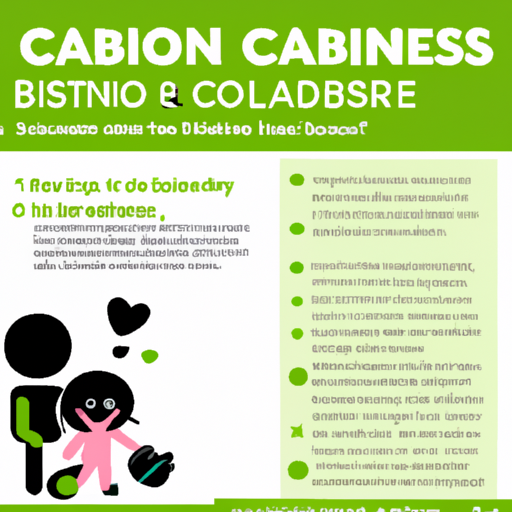
Green Transportation for Families
Transportation plays a significant role in our carbon footprint. By choosing eco-friendly transportation methods, you can reduce your family’s impact on the environment. Here are some ideas for green transportation with your baby:
Choosing Eco-Friendly Strollers
When selecting a stroller, choose one that is designed with eco-friendly materials and manufacturing processes. Look for strollers made from recycled materials or responsibly sourced fabrics. Additionally, consider a stroller that is designed for longevity, with features that allow it to grow with your child, reducing the need for multiple strollers over time.
Using Public Transportation
Whenever possible, opt for public transportation when traveling with your baby. Public transportation produces fewer carbon emissions per passenger compared to individual cars. It also offers an opportunity for you and your baby to explore your surroundings and engage with the community. Prioritize choosing routes with convenient access to elevators or ramps for stroller accessibility.
Walking or Biking with Your Baby
Walking or biking with your baby not only promotes a healthy and active lifestyle but also reduces your carbon footprint. Invest in a suitable baby carrier or bike trailer that allows you to safely transport your baby. When running errands or going to nearby destinations, consider leaving the car behind and enjoying the benefits of active transportation.
Conclusion
Green parenting is a conscious and sustainable approach to raising children that benefits both the environment and your baby. By choosing eco-friendly products, creating a sustainable nursery, embracing cloth diapering, breastfeeding, practicing baby-led weaning, using natural and homemade baby care, reducing waste and recycling, and adopting green transportation methods, you can make a significant difference in creating a greener future.
By taking small steps toward green parenting, you set a positive example for your child and instill lifelong values of environmental stewardship. You are not only creating a healthier and safer environment for your baby but also making a difference for future generations. Embracing green parenting is a rewarding journey that will leave a lasting legacy for both your family and the planet. Start today and be a catalyst for change in creating a sustainable and eco-friendly future for all.



